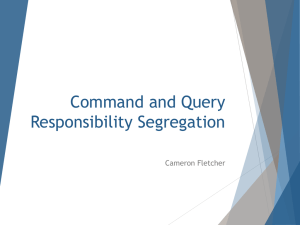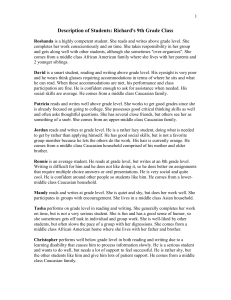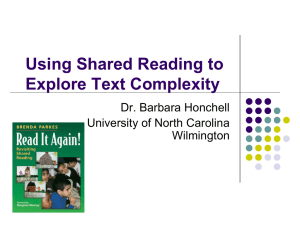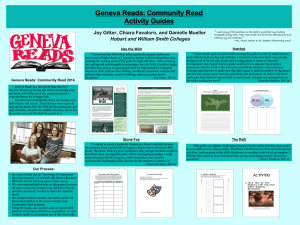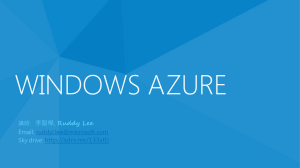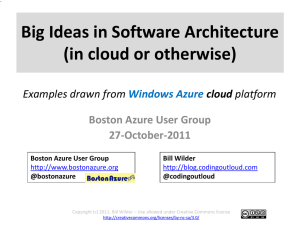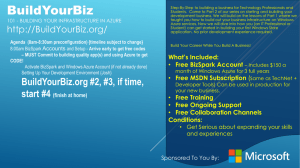CQRS and Windows Azure
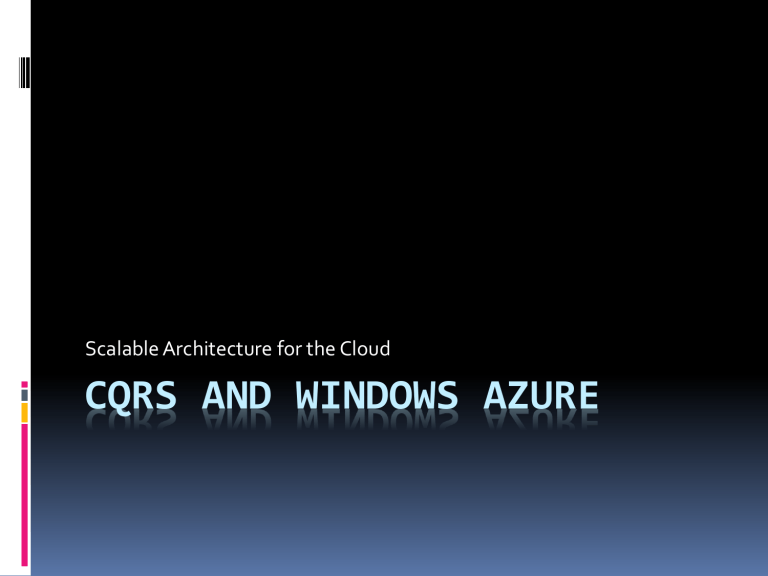
Scalable Architecture for the Cloud
CQRS AND WINDOWS AZURE
What????
Command Query Responsibility Segregation
What is it?
What kinds of apps is it for?
What are the moving parts?
What does it buy me?
How do I do this on Azure?
What is it?
An architectural pattern
Embracing modern requirements
Self service
High scalability
Asynchronous processing
Applicability
Multiple simultaneous users
Untrained users
We’ll be talking about the web
Applicability
Usage patterns
More reads than writes
No really, more reads than writes
Lots, lots, lots more
Applicability
Asynchronous Processing
“Thank you, you will receive a confirmation email shortly.”
3-Tier Architecture
DB
Domain
UI
Is it really symmetric?
Reads
Fast
Synchronous
Idempotent
Stale
Writes
Slow
Asynchronous
Stateful
Current
Sidebar
Command Query Separation
Methods should either:
Query State and return a value
Or Execute behavior and return nothing
Bertrand Meyer
CQRS Architecture
DB
DOMAIN
UI
CQRS Architecture
READ
DB
WRITE
DB
READ
MODEL
WRITE
MODEL
UI Q
Read Model / Store
Optimized for Reading
Denormalized out the wazoo!
Matches UI model requirements
No logic – DTO
One “table” per screen
SELECT * FROM TABLE WHERE …
No joins
It’s a cache, not a database!
Write Model / Store
Accepts Commands
Executes Business Rules
Generates Business Events
Write / Read Side Sync
Processes Domain Events
Updates tables in read store
What’s a Command?
A message
Named in the imperative
AddNewUser
PublishDocument
LaunchMissiles
Task Oriented
Command Processing
UI Validates before sending
UI Sends command
Write model re-validates
Write model processes business rules
Write model generates events
Assume commands will succeed most of the time
What’s an event?
A message
Named in the past tense
UserAdded
NewDocumentPublished
WentBoom
Express Changes in the domain over time
Save the event stream for reprocessing
Event Processing
Receive events as they come out
Update read stores
How is this scalable?
Web Farms
Event Processors
Read Stores
Harder to scale the write side
But we have lots more reads anyway
Other Advantages
External System Integration
Events write to external system
Commands when external system wants you to do something
You know it works, you’re using it!
Mapping to Azure
Queues
Table Store
Event Store
Read Stores
Worker role
Command processors
Event Processors
Web role
Front end
Show me some code!
A special bonus pattern!
EVENT SOURCING
What is event sourcing?
Model Persistence
ORM
We’re generating events anyway
Events record changes to the domain over time
So we know every state change that’s happened anyway
Event Sourcing
Load domain entities by “playing back” domain events
No need for ORM
Use snapshots for efficiency
Resources
Udi Dahan
http://www.udidahan.com
Greg Young
http://codebetter.com/blogs/gregyoung/
http://cqrs.wordpress.com/
Mark Nijhof
http://cre8ivethought.com/blog/index
http://www.agilification.com/post/CQRS-Seriesfrom-Mark-Nijhof.aspx
Questions?
